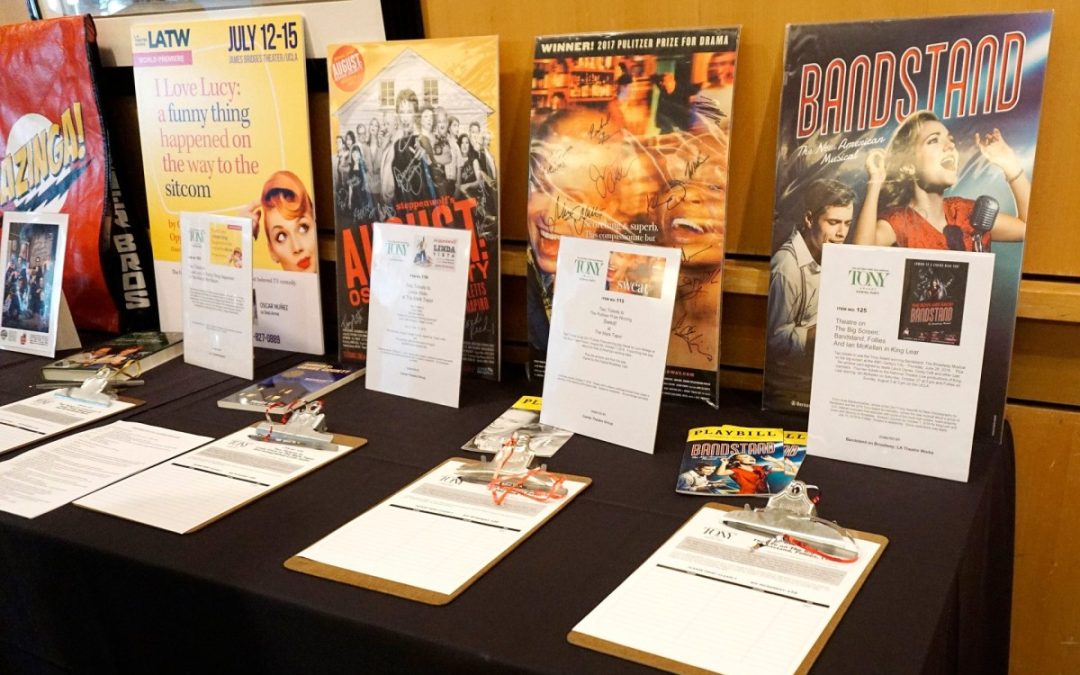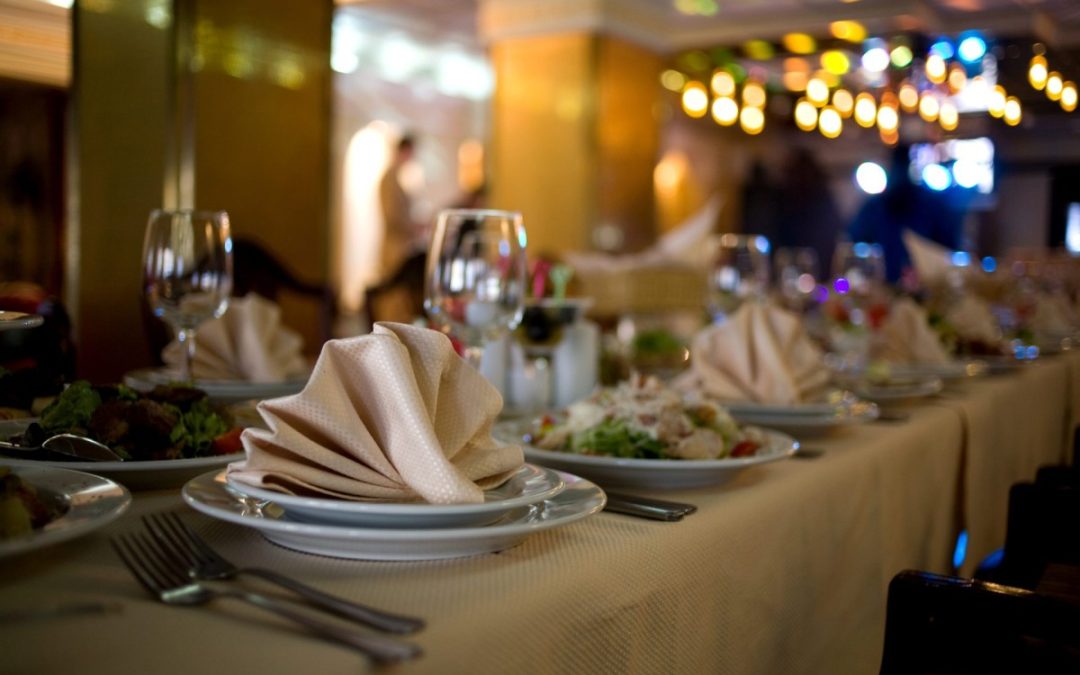
May 31, 2023 | Auction Tips, Event Tips
Fundraising events are a vital source of revenue for organizations, and auctions are one of the most effective ways to generate funds. However, conducting a successful auction is not as easy as it sounds.
Although some organizations will ask a volunteer or local celebrity to conduct their auction in an effort to save on costs, it often becomes apparent that conducting a successful auction requires specialized skills and expertise. This is where a benefit auctioneer comes in! Hiring such an auctioneer can make a significant difference in the success of your fundraising event.
Let’s start with a simple question: What is a benefit auctioneer? A benefit auctioneer is a professional who specializes in conducting auctions at fundraising events. Their role is not only to facilitate the auction but also to create an engaging and exciting atmosphere that encourages guests to bid generously. A benefit auctioneer must have excellent communication and interpersonal skills to connect with guests and build a rapport with them.
A benefit auctioneer with a BAS (Benefit Auction Specialist) certification has undergone extensive training through the National Auctioneers Association, and has demonstrated a high level of proficiency in conducting benefit auctions. This certification provides event organizers with the assurance that they are hiring a qualified and experienced professional. Currently, there are only about 200 individuals in the United States who hold this certification, and our very own John Bessolo is one of them!
In addition to facilitating a great live auction on your event day, a benefit auctioneer can also help to advise and guide you throughout your event planning process. Below are some of the ways that a benefit auctioneer can help make your event great:
- Maximizing Revenue – A benefit auctioneer has the experience and expertise to maximize the revenue generated from the auction. They know the ins and outs of auctions and can provide guidance before your event day on the best auction items to offer, the order in which they should be presented, and how to structure the bidding process to encourage higher bids.
- Engaging the Audience – An auction is only successful if people are willing to bid on items. A benefit auctioneer knows how to create a fun and engaging atmosphere that encourages guests to participate in the auction. They are skilled in building excitement and energy in the room, which can help to increase the number of bidders and the amount of money raised.
- Professionalism – A benefit auctioneer, particularly one with a BAS certification, is a trained and experienced professional. They understand the importance of maintaining a high level of professionalism throughout the event. This includes everything from dressing appropriately to handling any unexpected situations that may arise during the auction. This can help to create a seamless and enjoyable event for guests.
- Networking Opportunities – A professional benefit auctioneer has worked with many different organizations and individuals. They can advise on ways to leverage your existing network to help benefit your fundraising event. They may also make recommendations on other event vendors, and may even connect you with organizations that may help you acquire items and experiences for your auction.
- Enhanced Guest Experience – A benefit auctioneer is skilled in creating a memorable and enjoyable experience for guests. They know how to engage with the audience and create an atmosphere of excitement and fun. This not only helps to increase the number of bidders and the amount of money raised but also leaves guests with a positive impression of the event and organization. A successful benefit auction can be the highlight of a fundraising event, and the right benefit auctioneer can help to ensure that guests leave feeling satisfied and happy with their experience.
Ok, you’re thinking this all sounds amazing…but what about the cost? It’s true that hiring a professional benefit auctioneer will cost more than having a volunteer do it. However, your benefit auctioneer is the one vendor who exists SOLELY to help you raise more money! Although a caterer, DJ, or photographer will absolutely help to enhance your event, none of them will be directly appealing to your guests for donations. The auctioneer serves as a representative of the organization, and most organizations report a substantial increase in fundraising success when they hire a professional to handle this most important task.
Pro tip: Many of our clients have found success by asking a sponsor to underwrite the cost of the auctioneer.
Hiring a benefit auctioneer can be an excellent investment for any organization. The benefits (pun intended) go far beyond just facilitating the auction itself. An experienced auctioneer can maximize revenue, engage the audience, save time and effort, provide professionalism, offer expertise in benefit auctions, provide networking opportunities, consulting, and enhance the overall guest experience.
If you are ready to work with a BAS professional, or just want to learn even more about what benefit auctioneers have to offer, feel free to reach out to us here at Johnny B. Auction!

Apr 26, 2023 | Auction Tips, Event Tips, Online Auction, Silent Auction
Silent auctions are a great way to increase your event revenue. However, like anything else in this world, not all silent auctions are created equal. There are numerous factors to consider when putting on a silent auction, and today we’re going to focus on the importance of curating your silent auction items.
Oftentimes, when an organization tells me their silent auction doesn’t do as well as they would have liked, it comes down to one of two reasons:
- They do not take the time to carefully select the items that go into the silent auction.
- They use it as a dumping ground for items that they do not know what to do with.
Your silent auction is a great place to make a lot of money, but throwing everything but the kitchen sink into it isn’t going to help you make that money. Just as with your live auction, you want to choose items that are exciting to your audience. By carefully choosing the right items, your donors will be much more interested in the silent auction, which will increase bidding and your silent auction revenue. It also provides a better experience for your guests, as they now associate great items and packages with the event instead of a smorgasbord of stuff.
Some people think that the more items you have, the more opportunities there are to make money. This is not the case. More items does not equal more money. More items means your audience has to sift through more tables, more packages, and try to keep track of what they are interested in (was that item we liked at table 12 or table 24…?). Think of it like a google search. You’re looking for your search inquiry, and you will most likely stay on page 1 of google. Maybe you’ll go to page 2, but you will never go to page 3. If you have a huge number of items, your audience will look at the first few tables of items (page 1), maybe go into the next few rows (page 2), but they’ll never get through all of the items, let alone be able to keep track of all of them (page 3 and beyond). Plus, a lot of the excitement of a silent auction is wondering who will get a given item. Too many items means fewer bids per item and fewer chances of getting into an exciting bidding war and creating a bidding frenzy at the close of your silent auction.
Too often, we see duplicates of the same (or very similar) items. While your crowd may value a professional photography package, when there are 4-5 of those in the silent auction, each one becomes less valuable. This often results in all of the items selling for well below value, rather than 1 or 2 of them being bid up to a higher price point; there is simply less incentive for guests to keep bidding when there is so much to choose from.
Now, I know what you might be thinking, “but we got these donations from people and/or local businesses, and I don’t want to hurt their feelings by rejecting them.” And that is a valid point. However, the purpose of your event is to make money for your organization, and if nobody is interested in the free dental cleaning that was donated to you, then having that time take up valuable real estate in your silent auction only for it to receive few (or no) bids doesn’t serve anyone. We also know that when individuals and/or businesses donate their items, they want to see those items make the organization money and feel they have made a valuable contribution! It can be disheartening for donors to see an item they donate receive no bids or sell at a small fraction of its value.
If you have a surplus of donated items that you’ve determined aren’t the best fit for your silent auction, consider using them for another fundraising opportunity – perhaps a raffle or online-only auction a few months down the road. And then when planning for your next event, try a more targeted approach to obtaining items that really fit your silent auction’s needs (more on this topic another time).
Allow me to share the story of a client of mine who was having these exact problems. They received tons of donations from their community, but they didn’t consider whether the items they were getting were right for their donors. They would spend hours writing up descriptions for all the items, packaging the items into baskets and boxes, and displaying them in a huge silent auction area. At the end of the evening, only around 45% of the items would sell. The others would have no bids. They were beyond frustrated and disappointed.
The following year, they looked at me and said, “Johnny, we’re not doing a silent auction this year. It’s just not worth it and we don’t make enough on it to warrant the work.” While I understood the frustration, I urged them not to do this. Completely giving up their silent auction would have meant giving up a good revenue stream. It’s not that the silent auction doesn’t work, it’s that the wrong items were in the silent auction.
So, I did what any good benefit auctioneer would do: I looked at the data! After carefully reviewing many years of silent auction data, we were able to come up with a specific list of items and packages that got high traffic from their guests. The client agreed to give it another go, and that year, there wasn’t a single silent auction item left. All items received bids, with a heavy majority receiving multiple bids. Using about 60% less items than they had the previous year, and the assortment carefully selected, they had increased their silent auction revenue by 80%! Now, every year, we sit down and look at the previous year’s data and work to select the right mix of items and categories for the donors to make sure we are always capitalizing on the silent auction. At the end of each evening, the client never feels as though we have left any money on the table.
Don’t let your silent auction be a place for overflow items! It is a great place to make money for your organization! If you’re having trouble with your silent auction, it might just need a little tweak to become your great event revenue generator. If you need any help with it, feel free to contact us at info@johnnybauction.com.

Mar 19, 2023 | Check-In, Check-Out, Event Tips
Checking guests in and out of your fundraising event is one of the most logistically challenging things you will have to do at your event. It’s also one of the most crucial, as these experiences can quite literally make or break the experience for both your guests and your staff.
Now you might be thinking “Johnny, that sounds a bit dramatic…” so let’s dive into the importance of this a bit more:
For the organization, check in and check out are critically important because they allow you to know which guests are at your event, which items a guest is taking home, and how much/where to charge each guest at the end of the evening for their donations. A well-planned check in and check out process also reduces the amount of pressure on your staff during a time that can be extremely chaotic if unorganized.
On the guest side, check-in is the first impression your guests have of your event. A messy check-in process leads people to believe that the check-out process will be just as bad, and can even impact giving throughout the event as guests may doubt your capability to smoothly process their donations at the end of the event. A well planned and executed check-in will give your guests not only a good first impression, but also confidence that the event is going to run smoothly and be fun! A good check-in process doesn’t have people waiting in line for very long and gets them having fun and donating sooner.
While checking-in is the first impression you have on your guests, checking-out is the last impression you give them, and that last impression can be the reason a guest decides to return (or not) the next year. Even if you make a wonderful first impression, have a fun event and exciting live auction, and all of your donors have the best time, if your guests have a poor check-out experience and have to wait 45 minutes to pick up an item,, THAT is what they are going to remember most about your event. Having a smooth check-out process that makes the process simple for your donors is vital for rounding out an excellent fundraising event experience…and makes your donors look forward to coming back again and giving more!
I like to think of check-in and check-out as bookends for your event. Having a well planned check-in process sets you up for success in check-out! And that’s what we’re going to talk about next: how to set-up your check-in/out process from the organization’s perspective! Here are my top tips:
Check-In:
When you are selling tickets for your event, you’re going to want to collect several pieces of information on your guests, including name, address, phone number, email, and payment method. This way, the only information you should need to ask a guest to check them in is their name.
I cannot emphasize enough that it is vital to collect payment information before the event!! You are likely working with an auction system, most of which have mechanisms that allow you to properly store payment information such as credit card numbers (please confirm security with the platform you are using). Then, upon check in, your staff can simply inform guests that the payment method they previously provided will be used at the conclusion of the event for any donations they make (unless they wish to present a different form of payment upon check-out, of course). This is just like a hotel taking a credit card number upon check-in; although you could return to the front desk and pay with cash for your stay, having the card information on file allows you to do an express check-out.
Another critically important step at check-in is ensuring guests are provided with their correct bidder numbers. You can either assign bidder numbers to your guests in advance of the event, or you can assign them on the spot as they check-in. In either case, when the guest is handed their bidder number/bid card,, your staff should be double checking to ensure that their name is correctly associated with that number in your auction system. The last thing you want is to mix up people’s numbers or assign the same number more than once (we have seen this happen, and even once charges are corrected, it leaves a terrible impression on guests). With whatever system you are using, make sure you are able to look up a guest by their bidder number AND vice-versa!
During the Event:
I suggest you create an area to display who the winners of your auction items are. This is especially helpful for silent auction winners if you are not using mobile bidding or a platform that can send emails/texts to notify people if they have won an item or not. I recommend a large TV or projector screen where you can show a list of the winning bid numbers and the items. That way, donors can look at the screen to confirm if they won an item or not. Those who did not win anything now don’t have to wait in a line only to find out they didn’t win anything, and for those that did win an item, they know they need to go to the item collection table.
Check-Out:
The final step is that you need to charge everyone for their winning items and donations. Now, if you’ve properly collected everyone’s information upfront (names, addresses, emails and payment information), this is when all that prep-work comes in handy.
I am going to suggest to you that you create two check-out areas: one for financial questions or changes, and one for picking up items. These are two completely different tasks, and when they are done at the same table/area, things can get backed up and cause delays.
With this method:
- Your financial table is there for you to immediately charge those that want to pay while they are at the event instead of later in the evening (rare, but it does occur). This is also where you can help those who want to change payment methods.
- Guests who have no items to pick up can simply walk out,, they will just be charged for any donations with their payment method on file, and will receive an emailed receipt.
- We recommend having 1-2 staff members available to help direct guests into the appropriate line and advise guests who don’t have items to pick up that they are free to leave. Once you have done this for a year or two, guests will come to anticipate this simplicity, but if everyone has previously been required to wait in line to check out, they may need some guidance at first!
- After guests have departed, using your auction software/payment system, you can now charge everyone without feeling rushed, and send them proper itemized receipts via email!
This greatly reduces the amount of stress that is put onto an organization’s staff. And of course, it helps provide a smooth and easy check-out experience for your guests, sending them off with a great last impression.
There is a lot of planning, preparation, and practice that goes into creating a smooth check-in and check-out process, and all of that planning has a great impact on you and your guests. If you want to enhance both your organization’s and guests check-in/out experience, don’t hesitate to reach out to us here at Johnny B. Auction! We are here to help you put on the best fundraising event possible.

Jan 25, 2023 | Event Tips
I’ve been hearing a lot of chatter in the fundraising community about changing up the experience their guests are having at their event, and that totally makes sense. If you have the same event every year, things can get a little stale. However, when I think about changing things up, I’m thinking about things such as the auction items, the layout, the warm-up games, the focus of the fund-a-need, etc. What I don’t think about is… changing how the audience is going to eat!
I’ve been seeing numerous organizations move away from the plated dinner and change to a cocktail style event. Digging further into this, it seems to not be so much a way to “change up the event” for the guests, but more to save on venue and catering costs. But here’s the thing, and I tell all of my clients this whenever they tell me they are going to or want to do cocktail style….Don’t Do It!
Cocktail style events rarely raise as much money as a seated dining experience, making it much harder to reach your financial goal for the evening. There are three primary methods of feeding your guests, and we’re going to run through them, talk about which ones are the best at helping you make more money (and why!) at your event.
The three primary forms of feeding your donors are:
- Plated Meal
- Buffet Style
- Cocktail Style
First, let’s review the option which I’m seeing pop up more and more: Cocktail Style. Cocktail style is my least favorite of the three options because is the least likely to meet your fundraising goals.
With a cocktail style event, your guests are incentivized to move around the room for their food and drinks. While cocktail service works well for the silent auction portion of your event (because you want people to wander around and check out items) when it comes to the main event– your live auction and fund-a-need– you want your guests to be entirely focused on the program. With a cocktail style event, when it’s time for the auction to start, you’re now competing with your guests’ desires to grab another drink from the bar, look for the food server to get in one last appetizer, or keep mingling with other guests.
In the auction world, we think of cocktail style events as auction anarchy! There is no way to know where any of your high-bidders are going to be located or to ensure that your live auction or fund-a-need strategies can be properly executed. You will lose precious program time trying to manage the crowd, get their attention, or herd them close enough that they can see you and you can see their bidder numbers. Your speakers, emcee and/or your auctioneer will spend more time working to get the audience’s attention than actually doing what they are up there to do. And from a very practical perspective, guests are generally just more comfortable when they have a place to sit, put their belongings down, and relax. And comfortable guests who don’t have to worry about when they will eat or drink are higher bidding guests.
For all these reasons and more, I strongly urge you to reconsider this style of food service for your event! Cocktail style events may seem more affordable up front than offering a seated meal, but when you consider the fundraising dollars you will be leaving on the table, you can see why this move is generally an example of being penny wise and pound foolish.
If you do decide to go with a cocktail style event, a couple of things can help to make it more successful:
- We highly recommend that you cease food service during the live auction and fund-a-need to eliminate one potential distraction.
- Some organizations have seen more success hosting with style of the event by creating a lecture-style seating setup to be used only for the event program (space permitting).
Let’s move on to the next option, and a slightly better choice: Buffet Style food service.
In terms of fundraising success, buffets sit right in the middle for a reason; although people are seated when they eat and you can ensure you know where your high-bidders are, your guests still need to get up and move around in order to get their food, which creates disruption. You have to release tables to get their food, which creates a lot of announcements and background noise, the lines always take longer than expected, and by the time the last few tables are getting in line to get their first course, the earlier tables are finished and wanting to go back for seconds. Essentially, you can never plan the timing correctly with a buffet and it is still difficult to capture your full audience’s attention.
If you decide to go with a buffet, we strongly encourage you to close the buffet during the live auction and fund-a-need. Although you may still have some guests wanting to get up for seconds during this time (a non-issue with a plated meal, which we’ll get to shortly), you will retain more control than with a cocktail style service. Also, make sure to budget 20% longer than you think you will need to get everyone through the buffet line, as we have seen this almost always causes the main program to start late.
Let’s move on to the last option, the Plated Meal service. From a fundraising perspective, plated dinners are the most ideal option.
In addition to bringing a more professional feeling to your event and ensuring your guests are as comfortable as possible, this creates the most conducive environment for running your live auction and Fund-A-Need. This is because everyone is contained in one place, seated, and being served (so they don’t need to get up and disrupt your speeches, live auction or fund-a-need for another drink or bite). With your audience seated and secured, your auctioneer can come out and perform the live auction and fund-a-need knowing that everyone is going to be where they need to be.
A plated meal gives you the maximum opportunity to raise funds from all of your donors because you have the most amount of control over what is going on in the room. You know where your high-bidders are seated, you’ve minimized potential distractions, you’ve ensured your guests are comfortably seated with food and drinks, and you remain in control of the timeline; this lets all of your strategic planning really come to fruition. Sure, the plated dinner might cost you more than buffet or cocktail style, but it will help you raise more money than the other two options….an in the end, that’s why you’re hosting a fundraising event!
Since we work with so many schools, here’s an easy analogy. If you’re running a school, and you need to give an important announcement to all your students, would you do it during recess or lunch? No, of course not. Why? Because the kids are all running around, focused on playing and socializing, and not inclined to listen. If you want to make an important announcement to students, you take them into the gymnasium for an assembly, sit them down, and share that information in a controlled environment. Fundraising auctions are exactly the same! The more control you have over your setting, the more money you are going to make.
So, to wrap it all up, seated and plated dinners are the best, because they secure your audience in their chairs and you can properly execute all of your fundraising tactics to the best of your ability! Buffets are ok, but not as good as plated dinners because they mess up your timeline and give your audience an excuse to get up and move around (we only want them doing that AFTER the fundraising is done). And the least effective is the cocktail style, which creates a lot of chaos and leaves the most amount of money on the table. We have seen many organizations regret this style of event because they didn’t meet their financial goals for the event. Putting in the extra money for a plated dinner is going to significantly improve the return you are looking for at your fundraising event. And if you absolutely need to cut back on the expenses, go buffet style (though plated is better!), but don’t go to cocktail style.
At the end of the day, you put SO MUCH EFFORT into putting your fundraising event together, and we want to see that effort pay off by making as much money as possible for your cause. Our job is to work with you to ensure we don’t leave any money on the table, and the decision of what type of meal service to offer is just one of the many that we can support you with along the way!

Apr 9, 2019 | Auction Tips, Event Tips
Sticking to the Schedule is Important for Increased Revenue at Your Fundraising Event
Putting on a fundraising event is no easy task. There are a lot of moving pieces that need to be taken into consideration: where is the event going to take place? Who’s going to be invited? Are we going to have a silent and live auction? What items are we going to get for out auction? What kind of food are we going to serve and how? Once these, and a large number of other questions are answered, we then ask ourselves: how are we going to fit this all into one night?
Often times, a timeline for the evening is put together as a “rough guide” for how the events of the night should play out. But what many organizations don’t understand is that failing to follow a timeline actually leads to a loss in revenue at their fundraising event.
When an organization pushes back on the timeline (or doesn’t seem to have one at all), it can result in guests asking themselves:
- Can I trust the program?
- Is this going to push back the food service?
- How much longer is this going to go on?
Needless to say, it puts negative thoughts into the minds of your guests. This creates distrust and distracts from your organization’s objective of raising money for the event. If you were planning on serving dinner at 7:30pm, and you pushed it back to 8:00pm, your attendees are thinking to themselves “when is the food going to come out? I’m starving!” and that is going to be the main thing on their mind until the food arrives. Meanwhile, you might have someone on stage telling an emotional story relating to your organization’s mission and asking for donations, but a large portion of your audience isn’t paying attention because they are hungry and focused on when they will be fed.
Everyone has been to an event where the timeline has been off, and I believe that most everyone can agree that when you are attending an event and it is behind schedule, it can be frustrating. If your audience is frustrated, then they will be less likely to bid.
The example about pushing the dinner service back by 30 minutes is from an actual fundraising event. Do you want to know what the outcome was? I’ll tell you: By the time the food was served, it was almost 8:30pm. According to the original timeline, we were supposed to start the live auction at 7:50pm, but we didn’t get started until 8:40pm. The initial 30-minute delay created a 40-minute delay for the live auction. By the time the auction started, people were much less interested in the items, the organization’s cause, and were seeming ready to go home. By the end of the night, the organization felt just like the audience: upset and disappointed.
Thankfully, there is a part two to this story! After the issues they experienced with the timeline the first year, they understood the importance of staying on schedule and creating that smooth experience for the guests. Year two came around, doors opened 6:00pm, the silent auction closed at 7:15pm, and dinner was served on time at 7:30pm. When it was time to start the live auction 7:50pm, the feeling in the room was completely different from the year before. People were excited for the auction, they paid attention to stories that were being told about the organization’s mission and how they, and everyone in the room, were making a positive impact on the community. We started off the bidding and we started high. As the night went on, the bidding got even higher. The Fund-A-Need was also a big success. The difference in sticking to the timeline in year two saw an increase in gross revenue by over 40%.
There are many options that an organization has to increase revenue at their fundraising auction, and while the timeline is one of the most important, there are other options that organizations should look at as well. Johnny B. Auction® can help your organization figure out the best strategies and maximize your profits while giving your gets a fantastic experience.

Mar 8, 2019 | Event Tips
Have you ever wondered how much to charge for an individual ticket price to your charity fundraising event? A lot of organizations tend to fall into one of two categories when it comes to selecting a ticket price: 1) they believe that the ticket price is supposed to help cover the cost of the event, or 2) they rely on the money raised during the fundraiser to cover the cost of putting it on, so they set a lower ticket price to attract more attendees. What a lot of people don’t know is that your ticket price helps set a tone for your charity event. If the ticket price is too high, then maybe not everyone can afford to come to your event. If it’s too low, you might get a lot more people to come but you might not have as many high bidders in the room.
One thing that we’re asked a lot is how much we can sell live auction items for, and one of the questions we ask in response is “How much are you charging for an individual ticket price?” This is because there is a correlation between your ticket price and what your live auction items will sell for. If your ticket price is lower, then more people will be able to afford to come to your event, but they also might not have the economic means to be able to bid or donate in the way that you might be expecting. Having a higher ticket price tends to make it so people who can’t afford to attend your event don’t come, but those who are able to afford the higher price also most likely have the opportunity and the ability to bid and donate more at your event.
A higher ticket price also allows you to bring in more expensive/high quality items that people can afford. For example, if you have a ticket price of $65, and a live auction item with a value of $3000 and a starting bid of $1500, that might not be the right audience for the cost of that item. In this example, your ticket price is low, which allows for you to have more attendees at your charity event, but most live auction items sell between $500-$1000 with ticket prices less than $100. Even if your item is something that everyone in the room wants, it’s already starting higher than your selling range for that ticket price, and might not be the best item for your live auction that moment. However, if you are charging a ticket price between $100-$175, the general selling range for that ticket price is $1000-$3000. Your $3000 value item fits better into an event with a ticket price in that range.
One way to help select the right ticket price is to look at your previous year’s auction items and see what range they fall into. Additionally, the right benefit auctioneer can look at your past auction data and give you a recommendation on what you should charge for your ticket price. If you’re wondering what to charge for your event, and want to know more about how to make these types of decisions, don’t hesitate to reach out to us today!






